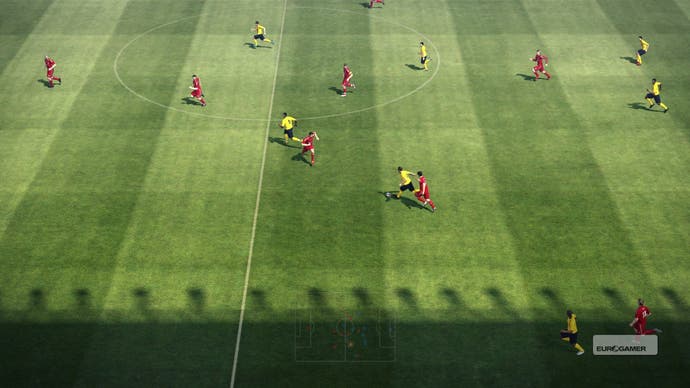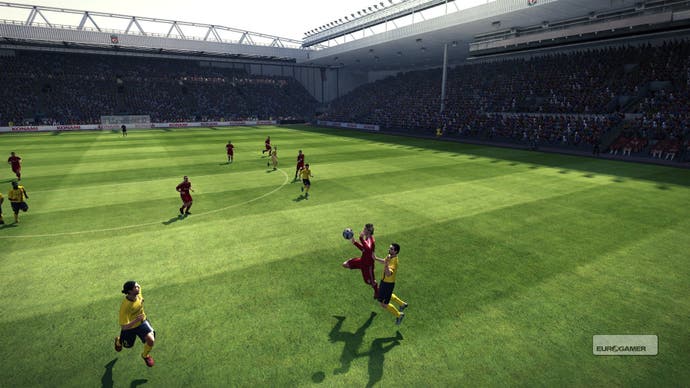PES 2010: Pro Evolution Soccer
Back from injury.
You have to feel for Konami. Even when it was the critics' favourite football game, Pro Evolution Soccer was still the plucky underdog - the Havant and Waterlooville of the games industry's FA Cup third round, scoring a couple of goals in front of the Kop and leaving with its head held high, even after getting pasted in the salesy second half. But things change, and they certainly have. PES 2009 was by no means a bad game, but its angular, sped-up one-dimensionality felt like a throwback next to the increased realism of EA's improving FIFA series, and the world gave it the hairdryer treatment. Back to the drawing board?
Our first, brief hands-on may not have suggested as much on the surface, but by the typically conservative standards of the PES series, the new Team Style and Player Card systems, not to mention the expanded range of directional control, were and are blue-sky, helicopter thinking. They've even removed the forcefield around throw-ins, allowing you to jostle and compete in a more natural manner. Imagine! Extended play on near-finished builds of the PS3 and Xbox 360 versions suggests these changes make a big difference. But all the same, the boys at EA Canada are anything but complacent. Will it be enough?

We won't be able to answer that for a while, but in the meantime we can give you a better sense of how Konami's revisions stack up. On the pitch, the developer is touting something akin to FIFA 10's 360-degree directional control, which would be about 45 times better than PES 2009's (or whatever 360 divided by eight actually is). In practice it doesn't feel as though you get that many degrees of response from the analogue stick when dribbling or playing the ball, but there's no denying that it's a dramatic departure from the fixed lines and diagonals of the past, and much closer to the effect achieved by EA Canada with last year's FIFA.
The vastly improved graphics engine helps here too, restoring humanity to the faces of the players thanks to something as simple as realistic lighting, and expanding the diversity and nature of animations considerably to accommodate the freer range of movement. There are still some work-in-progress horror shows (stand up Adebayor - actually, better sit back down again), but most players are suitably recognisable, and animations continue to reflect distinctive running and movement styles - one of PES' historical strengths. Overall the improvement is considerable, and 2009 is almost unrecognisable in contrast.

With the pace more measured, PES has crept back up from an abstract game derived from football to something more directly resembling what we see on TV. A lot of the little flicks and feints that used to require complex contortions of various sticks and button combos are now performed in-line too, and prove easier to commit to muscle memory. The result is a strong footballing foundation that respects intelligent use of space and tactical imagination on the pitch, and makes for a more deliberate, precarious feeling in control, punishing slips and spillages swiftly but seldom falling into predictable patterns.
Elsewhere Konami has tightened the AI, particularly goalkeepers, who can't be rounded so easily, with manual control returning for them as well. Keepers can also be unsighted, which helps you make more of free kicks and players with an aptitude for long-range drives. The overall first impression is that PES 2010 plays out like FIFA 09 without the bias towards pacy attackers, making for tight, competitive multiplayer matches.


